The Net
A Very Brief History of The Internet
& Other Related Technologies
1957
The Sovets launch Sputnik
The American responded by stepping up their investment in technology
1958
ARPA, Advanced Research Projects Agency
Organized by the US Defense Department in response to the Sputnik crisis. to establish U.S. lead in technology applicable to the military.
Technological think-tank
Directly employed scientists
Funded research in top American institutions
1972
Renames Defense Advanced Research Projects Agency (DARPA)
1962 to 1968
Packet Switching Networks developed
The origin is military: for utmost security in transferring information of networks.
Developed within The Advanced Research Projects agency, ARPA
Data split into tiny packets that may take different routes to a destination
Hard to eavesdrop on messages
More that one route available – if one route goes down another may be used
1968
Douglas Engelbart demonstrates the “Mouse”
While working at the Stanford Research Institute with a grant from NASA Douglas Engelbart invented the Mouse and windows for text editing.
He and his team were all responsible for many more new innovations, including hypertext, object addressing and dynamic file linking, as well as shared-screen collaboration involving two persons at different sites communicating over a network with audio and video interface.
1969
First Network of four Nodes
Advanced Research Projects Agency funds the first network of four nodes between:
The University of California, LA
Stanford Research Institute
The University of Santa Barbara
The University of Utah
First message between:UCLA and Stanford Research Institute
LOG-IN….CRASH!
1972
Email
Electronic mail Invented
A program to send messages across a distributed network
15 Nodes on ARPANET
1972
FTP
File Transfer Protocol specification released
Used to transfer files between computers that are connected to the internet
1972
First Personal Computer with GUI and Mouse
Alan Kay at the Learning Research Group at Xerox introduced the GUI that used iconic graphical representations for computer functions. He designed overlapping windows along with menus and folders and storage processor box.
1973
Ethernet
Ethernet designed by Robert Metcalfe at Xerox
First Ethernet Operation
A method of networking personal computers
Ethernet boards are installed on the computer
Computers are connected by a coaxial cable, a solid wire that is shielded by insulating material to prevent interference
1973
First International Connections
University College of London
Royal Radar Establishment, Norway
1975
Altair 8800
Created by Ed Roberts of Micro Instrumentation Telemetry Systems
Mainly used and improved upon by technology hobbyists
Bill Gates and Paul Allen created the software, Basic for this computer.
At this time they began to call themselves Microsoft.
1976
First Apple Computer
1981
IBM
International Business Machines announces the IBM personal computer
Microsoft creates DOS
1983
TCP/IP
TCP – Transmission Control Protocol
IP – Internet Protocol
1983 – ARPAnet began to use TCP/IP. Every site that is part of their network is expected to use TCP/IP.
ARPANET offically became “The Internet” .
When the ARPAnet had begun operating in 1969, its programmers had instituted an early version of Network Control Protocol (NCP).TCP was introduced in 1977 and began to replace NCP . TCP was faster, easier to use, and less expensive to implement than NCP. In 1978 IP was added to TCP and takes over the routing of messages.
TCP/IP: Software that connects a computer to the Internet
TCP: breaks the data into small packets and recompiles this data when it get to its destination
IP: network routing process
1983
Apple Macintosh launched Lisa 1
From 1977 Apple produced a number of computers some better equipped than others
Lisa had 1MB of RAM and a 5 MB hard disk.
1984
Lisa 2
Lisa 2 was released with a 3.5 inch drive. Lisa was the first affordable personal computer with graphic interface
1990
Invension of the World Wide Web
Tim Berners Lee invented the World Wide Web at CERN, the European Particle Physics Laboratory, Switzerland
The World Wide Web Program established three core components:
URL: Universal Resource Locator
HTTP: Hyper Text Transfer Protocol
HTML: Hyper Text markup language
Tim Berners Lee is now the Director of the World Wide Web Consortium, W3C
1992
Commerce
Congress signs a bill to open the Internet to commerce./
One Million hosts on The Internet
1993
Mosaic
First graphics-bases Web browser becomes available.
Marc Andressen and a group of student programmers National Center for Supercomputing Applications at the University of Illinois
1994
Netscape
Together Jim Clarke (founder of Silicon Graphics) and Marc Andressen founded Mosaic Communications, this later became Netscape Communications. They created the Netscape browser which was based on Mosaic.
Netscape integrated three Internet technologies in one application — web, email, and newsgroups.
The Netscape browser was designed to run on all three of the major platforms: Mac, Windows and Unix.
Netscape rapidly became the most popular browser and opens the web to a far greater audience and users.
Sputnik 1957
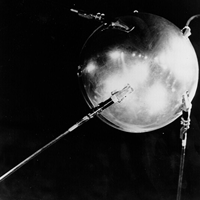
Main Frame 1960s

Early Monitor

Early Mouse Idea
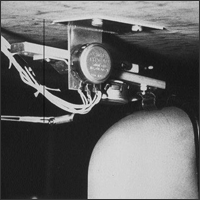
Wooden Mouse 1968

Keyboard (Key Set) 1968

First Four Nodes 1969
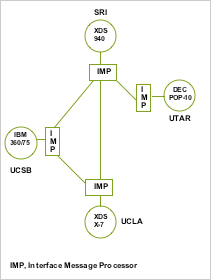
First Personal Computer with GUI 1972

Altair 8800 1975
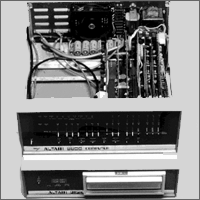
Altair 8800 KEYBOARD 1975
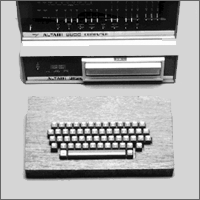
First Apple1977
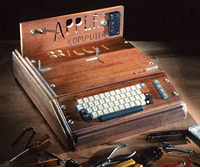
IBM 1981

Apple’s Lisa 1984







